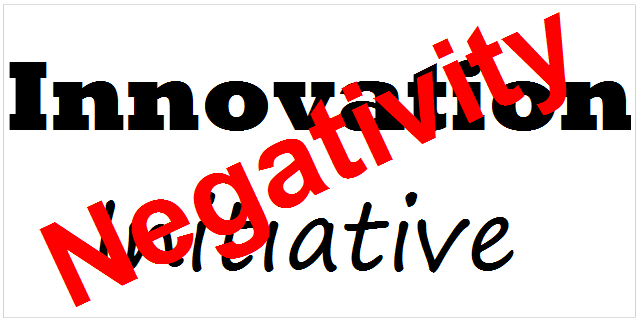
2 “Rules” To Encourage Innovation and Initiative
Most entrepreneurs and leaders would agree that innovation and initiative in their organizations are positive things, right? Then why as leaders and entrepreneurs do many of us not follow two simple “rules” to encourage more of both: 1.) the “Two Second Rule” and 2.) the “Well Done Rule”? Let me explain.
These are names I’ve given to two practices I suggest you adopt, if you have not already. The first, or the so-called “Two Second Rule,” refers to restraining yourself from being immediately negative when someone brings you an idea. For many of us, the first reaction to a new idea from an employee or colleague is to point out all the flaws. We immediately make comments along the lines of, “That’ll never work because…,” quickly demoralizing the person trying to innovate and potentially conditioning them to not want to bother bringing us ideas and suggestions in the future. I call it the “Two Second Rule” because it’s meant to encourage us to think for a couple of seconds when we hear an idea, rather than immediately going on auto-pilot and launching into all the negatives. Note that I didn’t say that the idea should never receive critical review, analysis and adaptation; just don’t kill it with negativity right out of the box.
The second, or the so-called “Well Done Rule,” refers to making sure we dole out some praise to people who bring us new ideas and suggestions, whether we fully agree with them or not. We want to encourage people to bring us ideas, as companies grow and thrive by “keeping it fresh”.
Granted, as leaders of companies and other organizations, most of us are “maxxed out”; we’re inundated with requests and our “to do list” never seems to end. So, it’s understandable if you may be a bit concerned about encouraging people to bring you even more requests, suggestions and ideas. I understand completely. However, do you agree that innovation and initiative are important? If yes, then rather than shutting them down by automatically being negative or by not giving people the praise they merit, establish mechanisms to deal with all the ideas and innovations more efficiently.
Set up something along the lines of an “innovation group” – I hesitate to say “innovation committee,” as committees have such a negative reputation and carry many connotations that are counter to innovation. Whatever you decide to call it, use it as a mechanism for organizing the ideas that come in and presenting them to you in a format that’s easy to deal with more efficiently. For example, it can be a simple table of ideas, categorized by the area of your business on which each idea touches. You can even ask the group to prioritize the ideas to highlight which ones they think are best. Notice that I didn’t say “screen” the ideas. You don’t want the group to eliminate ideas, as your perspective and experience may lead you to prioritize them differently and even the lesser ranked ideas may lead you to think of others.
Once you are receiving these ranked reports of ideas and suggestions on a regular basis, say monthly, you can also set up group and one-on-one interaction with the innovators. In such meetings you can refine the ideas and you can recognize the people who have contributed. You may even want to set up a monetary remuneration system for the innovators whose ideas are adopted and implemented, in order to further incentivize such activity. That’s a possible step, but even without it, I think you’ll be pleased with what simple, non-monetary recognition will do to get your team innovating more.
So give the Two Second Rule and the Well Done Rule a try in your ventures and other initiatives. As you can see, there are many different ways you can implement these “rules” and obviously, you should tailor the approach you take to the realities of your team and organization. However you decide to do it, I’m confident that with less initial negativity and more recognition, you’ll be pleased with the increased levels of innovation and initiative in your organization.

Look at what happened to the Swiss clock market after they didn´t want to go for digital!
What a great outline, Paul! I’m one who doesn’t like meetings and committees for the very reason you stated. There seems to be a safely net thrown around groups of people that doesn’t encourage anyone to think creatively. Business would benefit from encouraging idea sharing. It’s not always one idea but a combination of ideas that create something new.
Sherrie
Yes, that’s an excellent example. Innovation is critical. Stagnation and the “ostrich approach” are very dangerous!
Thanks, Sherrie!
I agree regarding committees and groups — that “safety net” that you mention often doesn’t lead to much true initiative or innovation. That said, having mechanisms in place that allow people to freely share ideas, suggestions and innovations can be very helpful. I agree with your point that it’s often not one “great” idea that leads to successful innovation; frequently it’s the combination of ideas or follow-on/related ideas that really make the difference.
Yes, being afraid of changing paradigms is dangerous though we feel that change involves danger. = )